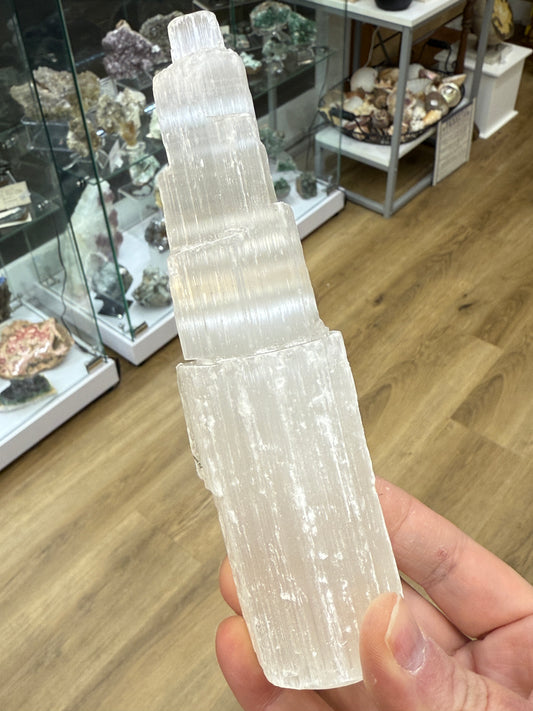Collection: Selenite
The term "Selenite" is commonly used interchangeably with gypsum, but since the 15th century, it specifically denotes the transparent variety occurring in crystals or crystalline masses.
Gypsum, formed as an evaporative mineral, is frequently encountered in alkaline lake muds, evaporated seas, clay beds, salt springs and flats, and caves. Its presence often coincides with other minerals, including silver, copper ores, sulfur, sulfides, iron ores, coal, dolomite, calcite, opal, and limestone.
In regions with dry, desert conditions and arid landscapes, sand can become trapped both internally and externally during the formation of gypsum crystals. Internal inclusion of sand can give rise to distinctive shapes, such as the interior hourglass shape observed in selenite crystals from the ancient Great Salt Plains Lake bed in Oklahoma. External inclusion manifests as embedded sand grains on the crystal surface, as commonly seen in the familiar desert rose formations.
We offer PICKUP and SHIPPING for anything on the website! Click "More Payment Options" and you will find PayPal, ShopPay, etc PLUS In-Store Pickup Available!
-
Selenite Tower
Regular price From $9.00 USDRegular priceUnit price / per -
Selenite Crystal Bracelet
Regular price From $14.00 USDRegular priceUnit price / per




